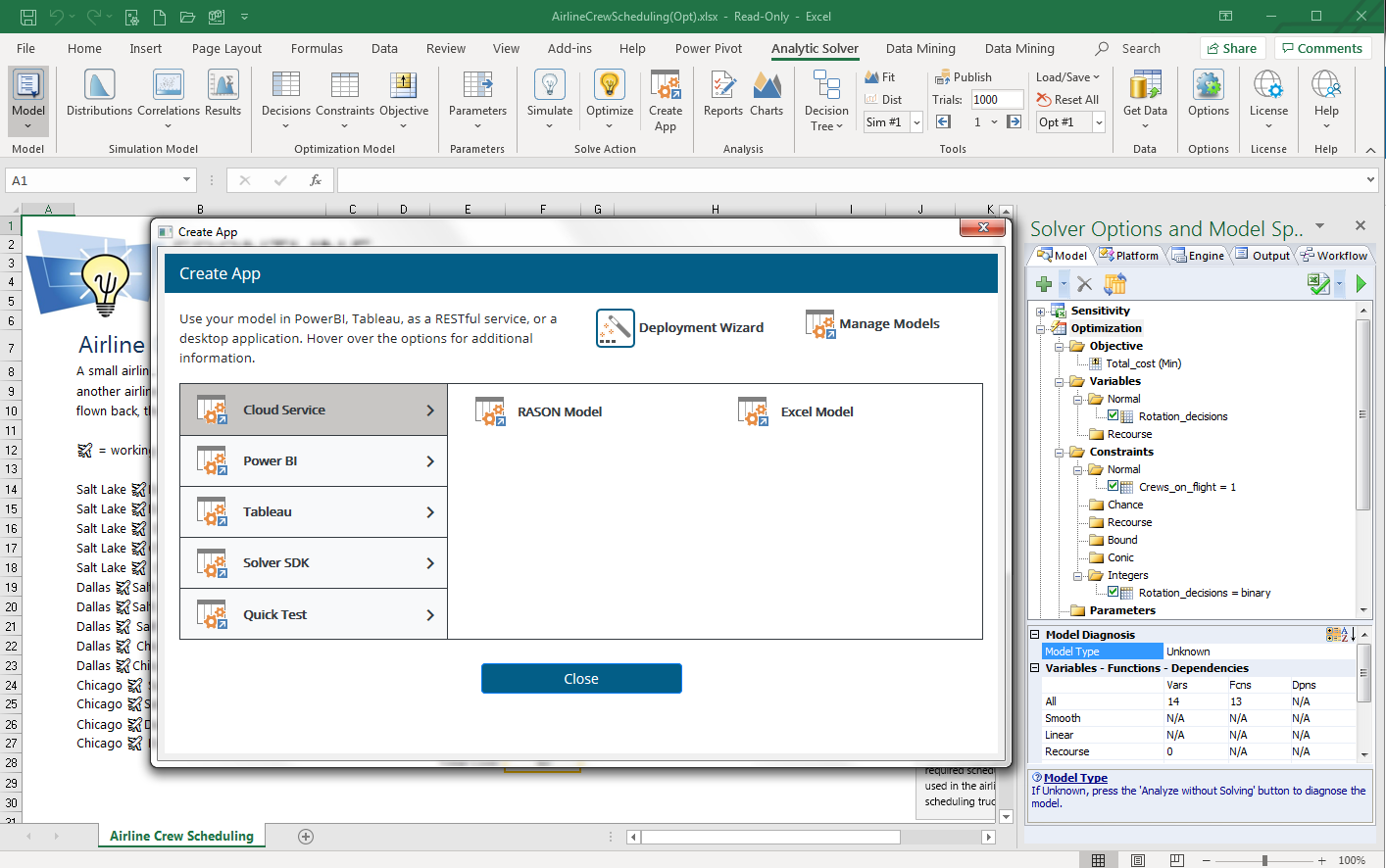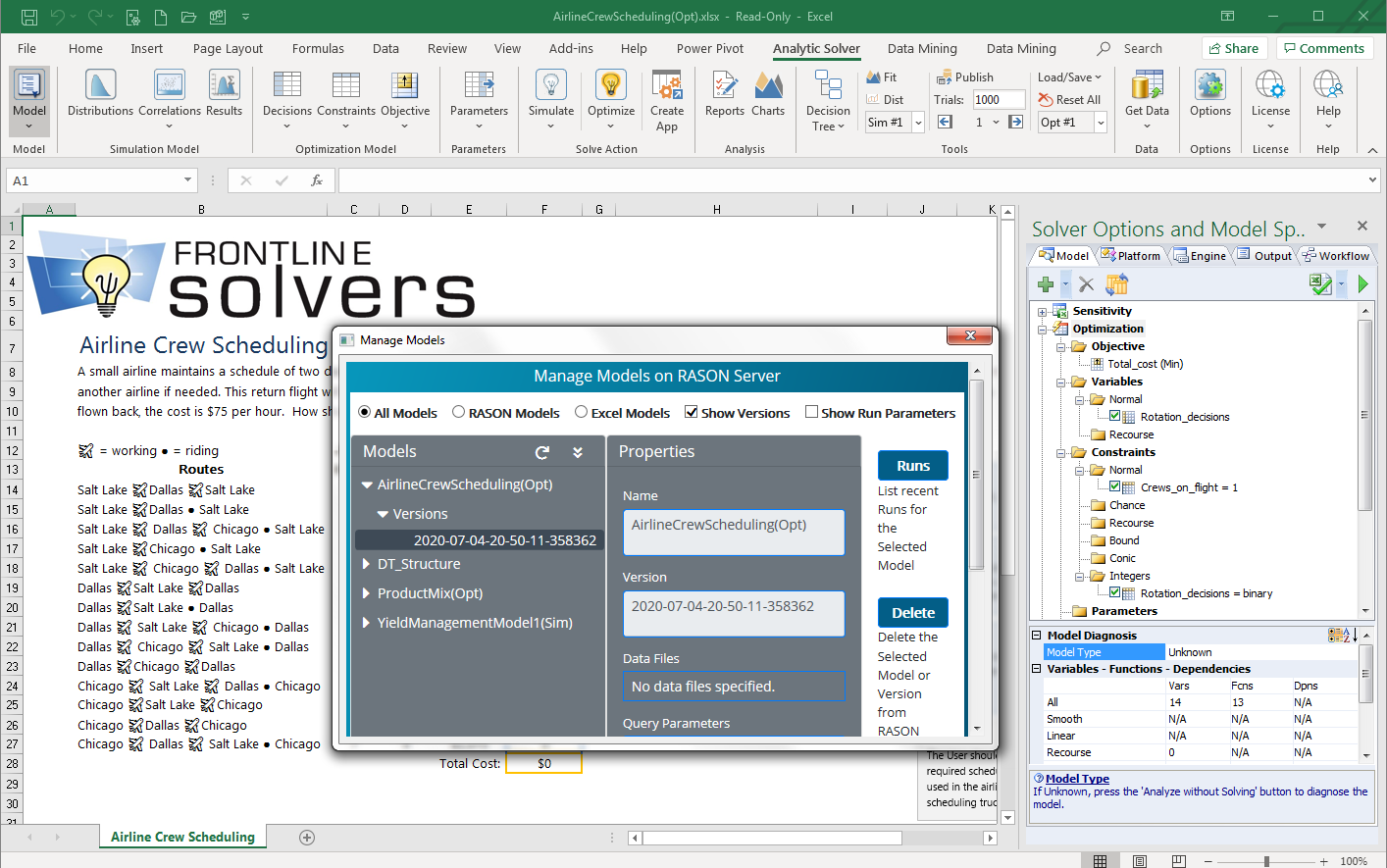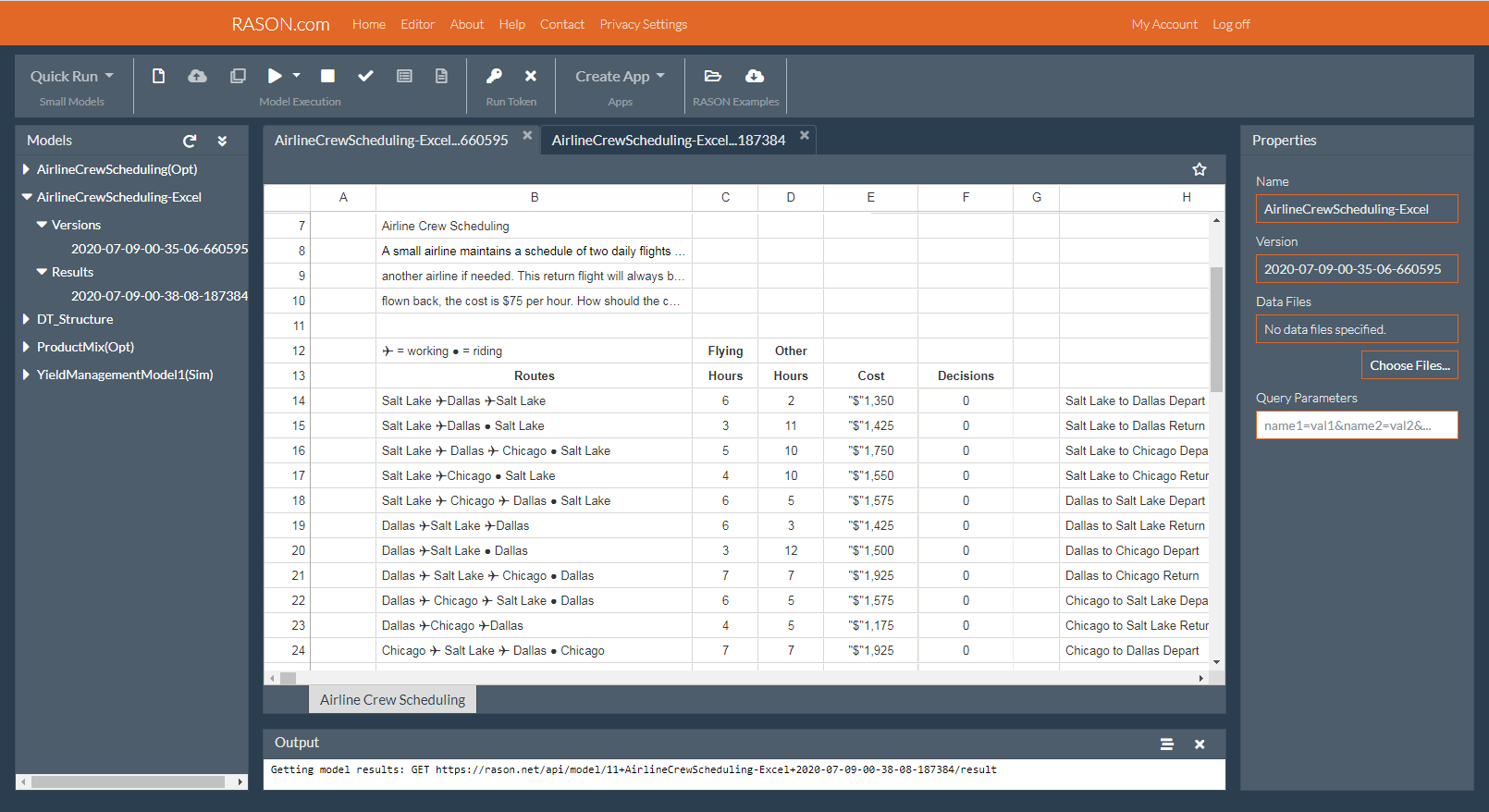We've just published RASON® V2020.5 and Analytic Solver® V2020.5, both major new releases. This is a major milestone for both products: Now from RASON's perspective, Analytic Solver is an easy-to-use "model authoring" tool; and from Analytic Solver's perspective, RASON is an easy-to-use "model deployment" tool. Unified, they offer the fastest and easiest, most productive way to go from an analytic model that solves a business problem "in principle, at my desk" to a cloud-based decision service that solves the business problem "in practice, every day, for everyone who needs it".
RASON is a high-level modeling language, and from its beginning in 2015, you could write your optimization or simulation model directly in RASON. As early as 2016, we introduced the ability to translate optimization and simulation models into RASON. In 2017 and 2018, we released and then expanded the ability to write your data mining, text mining or machine learning model directly in RASON -- and in 2019, we introduced the ability to translate data mining models into RASON.
But there were two limitations: Using all the power of Analytic Solver in Excel, (1) you could create optimization or simulation models using certain advanced Excel formulas that we couldn't automatically translate to RASON; and (2) you could create multi-stage data mining workflows, that we weren't yet able to automatically translate to RASON. With our V2020.5 release, both of these limitations are removed. Taking them in reverse order, Analytic Solver V2020.5 will translate a multi-stage data mining workflow to RASON. And perhaps more exciting, Analytic Solver V2020.5 enables you to publish your Excel workbook model, in its original (untranslated) form, to the RASON Server, and run it and maintain it in the cloud.
We've gone further: Analytic Solver's Create App feature now offers you a full set of options for deploying your model to the cloud. You can choose to translate your model from Excel formulas to RASON syntax, or you can keep your model in its Excel workbook form, and deploy your workbook to the cloud. Either way, your model is available as a RESTful decision service that can be run "on demand" from any web or mobile app -- especially easily from a Power App or Power Automate script. Here's a quick idea of what you'll see using Create App in Analytic Solver V2020.5:

And there's more: You can manage your deployed model, and monitor recent "solves" – even when it's run "on demand" by other web or mobile apps – directly in Analytic Solver, without leaving Excel. (You can do more if you visit the RASON portal at Rason.com.) Here's another quick picture showing what you'll see when you check on recent versions and runs of your model:

On the RASON portal at Rason.com, there's a full-power diagram editor for multi-stage decision flows, and a text editor for models written in RASON's modeling language. But since now you can post your Excel workbook models directly to the RASON Server and maintain them there, we've added a basic "viewer" capability for Excel workbook models to the RASON portal:

We hope you'll agree that this latest release offers the fastest, easiest, most productive way to go "all the way" from an Excel analytic model to a cloud-based decision service that solves the business problem "in practice, every day, for everyone who needs it"!
